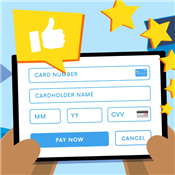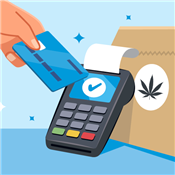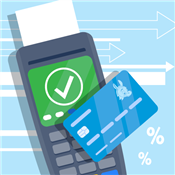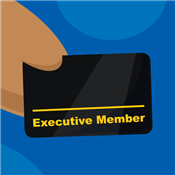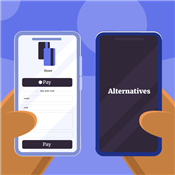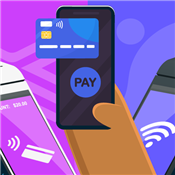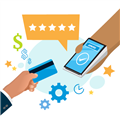Credit Card Fraud Detection
Credit card fraud costs small businesses billions each year. Learn how you can detect payment fraud and stop the transaction before it's too late.
 |
Over 75% of chargebacks are due to fraud from stolen cards. In 2020 alone, small businesses lost 3.81% of their revenue to chargebacks.
And if you do get a chargeback due to fraud, your odds of reversing it are low.
Luckily, there are fraud detection tools and prevention tactics to help you catch fraud attempts early on. Read on for 10 steps to detecting fraud to better protect your business.
Credit Card Fraud Statistics
- 47% of Americans have been victim to credit card fraud in the past 5 years.
- America accounts for 47% of the world's credit card fraud.
- Most fraud occurs for card-not-present (CNP) transactions. CNP fraud is 81% more likely than in-person fraud.
- Merchants, merchant acquirers, and ATM acquirers bore 31% of the total losses due to credit card fraud.
What is Credit Card Fraud Detection?
Credit card fraud detection involves using specific tools and tactics to recognize a potentially fraudulent purchase. This means that the person placing the order is not the rightful owner of the credit card.
For online businesses, there are tools that analyze transactions for risk of fraud, based on verifying CVV, billing address, IP address, and other matches.
For face-to-face purchases, fraud detection will require the staff's diligence on observing behavior, verifying photo ID, and examining the credit card.
We'll go over these different methods in-depth, for both online and in-store.
Ways to Detect Credit Card Fraud Online
 |
Most credit card fraud happens for online purchases. Here are a few precautions your e-commerce business can take to detect (and prevent) fraud.
1. Use Credit Card Fraud Detection Tools
Fraud detection tools help you catch fraud by matching relevant data. If key points don't match, then the transaction is blocked.
Some tools you can implement are:
- CVV verification. This at least verifies that the customer has the physical card in hand. This stops fraudsters who stole just the credit card number.
- AVS verification. An address verification system (AVS) verifies that the billing address entered matches the address on file for the cardholder account. This can stop fraudsters who stole the whole card since they won't know the billing address.
- 3D Secure tools. This includes Verified by Visa, Mastercard SecureCode, American Express SafeKey, and Discover ProtectBuy. They have the card issuer validate the identity of the card user.
If there is a chargeback later, 3D Secure also shifts your liability to the card-issuing bank. Though this is not the case for all reason codes.
There may be an additional fee per transaction for using these tools. But it's worth it to stop fraud attempts before the transaction is processed.
2. Look Out for Suspicious Orders
Some types of purchases carry a higher risk of fraud. It's smart to review orders and see if there's anything unusual before shipping (instead of automatically going to fulfillment).
Some common suspicious orders that could indicate fraud include:
- Larger orders than your usual ticket sizes
- International orders
- Overnight / expedited shipping
- Orders that only contain expensive items or multiples of the same item
- Shipping address and billing address not the same, especially if they're in different countries
- Shipping address was changed after placing the order
- Multiple declined order attempts before being accepted
Having one of these points doesn't necessarily mean that it's fraud (though 2 or 3 points increases the risk). But it's still better to be cautious and look into it. That brings us to the next step.
3. Investigate Suspicious Orders
If an order seems suspicious to you, investigate before shipping it out. This will require some detective legwork.
Here are some things to check for:
- Call the customer. Lots of fraudsters use fake numbers, so first see if you can reach the customer. Confirm details about the order, address, email, etc. If the person can't answer simple questions, it's a sign that something's not right.
- Check the IP address. Check if the IP address matches the same general area as the billing address. Also, check if it's a proxy service. Keep in mind, this doesn't guarantee it's fraud. Someone may simply be using a VPN for security.
- Check email and phone number. Similarly, check that the phone number matches the same general area as the billing address and that the email address used exists and is legit.
- Check shipping address. Check that the shipping address seems like a real home or work address.
- Analyze purchase behavior. See if there are multiple orders with different credit cards shipping to the same address, or if multiple orders come from the same IP address.
If you feel uneasy about any of the above, it's best to cancel the order than risk a chargeback.
4. Use Anti Fraud Detection Software
Most processing providers offer their own fraud detection tools. But you can also supplement that with a third-party anti-fraud software. Some recommended third-party tools are:
5. What to Do if You Suspect Fraud Online
What do you do if you suspect an order is fraudulent, but it's already been processed? Don't worry, you can still protect your business from losses.
Here are some steps to take:
- Reach out to the customer. Like previously mentioned, call the number on the order (or email if that's the only option). That will tell you a lot - whether the number goes to a random person, is out of service, has no answer, or the person can't confirm details of the order. A lot of fraudsters don't want attention or traces of communication.
- Delay shipment. Delay shipping the item by 1-2 days while you investigate further. This way, you won't lose your merchandise. Once it's shipped, consider it lost.
- Issue refund. If you suspect fraud, the best course of action is to issue a refund immediately, before it can be disputed. This avoids escalating it into a costly chargeback.
Credit Card Fraud Detection In-Store
 |
While in-store fraud is rarer, it does happen occasionally. Here are some tips for spotting fraud for face-to-face transactions.
It's important to train your staff on these best practices - not only to protect the business, but themselves too.
6. Use an EMV Chip Reader
Dipping an EMV chip card is a lot more secure than swiping the magstripe. It's best to upgrade all your processing equipment to be EMV compliant.
With a swipe card, the credit card information is stored in the magnetic stripe. This makes it easy for hackers to steal the information and create counterfeits. With EMV cards, the credit card information is encrypted in the chip, making it harder to steal.
Most cards nowadays come with a chip. You should avoid swiping a card that has a chip. It will shift the liability to you if the customer disputes the charge later. The merchant will bear the responsibility, no matter if you have evidence that the transaction was valid.
7. Look for Suspicious Behavior
Look for suspicious behavior when the customer is walking around the store and during checkout. Some red flags could be:
- Unusually large purchases or only expensive items
- Acting nervous OR being too talkative (in an attempt to distract you)
- Looking like they're in a rush
- Having an excuse for not having an ID
Trust your gut instinct - you know what suspicious looks like.
8. Verify Customer Identity
This one seems like a "duh" no-brainer tip, but hardly anyone does this nowadays. Ask to see the customer's photo ID and make sure that the name matches that on the card.
Especially for merchants that sell high-priced riskier products, it would benefit you not to skip this step. Popular items bought with stolen credit cards include:
- Jewelry
- Electronics
- Luxury goods
- Gift cards
- Video games
- Hotel rooms
9. Examine the Credit Card
Look at the credit card for signs of tampering or counterfeit. Some things to look for include:
- Damaged magstripe. Some fraudsters will damage it to force you to do manual entry.
- Misshapen and uneven letters and numbers.
- Amex cards start with 3, Visa cards with 4, Mastercard with 5, and Discover cards with 6.
- The last 4 digits on the receipt match those on the card.
- Holograms should be clear and 3-dimensional.
10. Call the Card Issuer with a Code 10
If you think strongly suspect a customer is using a counterfeit or stolen card, don't confront them. That could be dangerous for you and your employees.
A better approach would be to call the credit card issuer and request a Code 10 authorization. Just casually tell the customer that you need to make a call to complete the sale.
Code 10 alerts the issuer of possible fraud. During the call, you'll be asked a series of yes or no questions to help the issuer determine if the transaction is legit. The customer won't have any idea.
Follow the operator's guidance. If it is fraud but you don't feel safe denying the transaction, it's best to proceed and just give up the merchandise. Afterward, you can cancel the order and call your processor and the police.
How Credit Card Fraud Hurts Your Business
We all know that fraud is bad, but what are the consequences for your business? Let's take a look at what happens when there's fraud.
A fraudster makes a purchase with a stolen credit card. The real cardholder sees the unknown charge and disputes it to the bank. The bank returns the money to the cardholder (rightfully so).
But someone still needs to pay for that purchase. That's right - the bank will seek to recover that money from the merchant. In total, your losses are:
- Loss of the sales amount
- A chargeback fee that usually ranges from $15-$50
- Time spent dealing with the chargeback
- Merchandise replacement
- Money you invested in the item
- The processing fee you paid for that sale
- Shipping costs
In total, one chargeback can cost you up to 3 times the original sales amount.
And more than that, if you get a lot of chargebacks, you could be seen as a risky merchant, which could incur higher processing rates. And in worst cases, your processing provider can even withhold funds, or suspend or close your merchant account.
Therefore, it's important to prevent fraud before it happens. It'll save you from losses, stress, and having a bad processing record.
Types of Credit Card Fraud
It's important to understand the different types of credit card fraud you may encounter. This helps you learn how to handle different cases. Here are the most common types of payment fraud.
Stolen credit card
This is when someone steals a credit card (either physically or just the card details) and uses it to make purchases before the owner notices.
This type of fraud can often be prevented with online fraud detection tools. For example, if the fraudster doesn't know the billing address, the transaction can be blocked.
Fake credit card
This is when a criminal steals someone's credit card details via a skimming device. They can then create a counterfeit card. You may be able to detect a counterfeit card if you're diligent about examining cards before transactions.
"Friendly" fraud
This is when the cardholder makes a purchase but then disputes it later. Most of the time, it's an innocent mistake. Maybe they didn't recognize the charge on their statement, or a family member made the purchase without telling them.
Occasionally, the person does have ill intent and is trying to get out of paying for something. This is called cyber shoplifting.
This type of fraud can't be detected beforehand since the purchase is legitimate. If it was an innocent mistake, it can usually be resolved by talking to the customer to clear it up. But if the customer refuses, then you'll need to gather strong evidence to fight the chargeback.
Friendly fraud can often be prevented by offering efficient customer service, having clear store policies, and tracking shipping. Read more in our detailed guide on preventing fraud.
Bottom Line
It takes diligence to detect and prevent fraud before it happens. It's important to act quickly before it becomes a bigger issue.
And remember, when in doubt, just deny the transaction or refund the sale (if already processed). You may lose the sale, but it's much better than dealing with a chargeback and having it on your record.
References
Anna G is a research director at CreditDonkey, a credit card processing comparison and reviews website. Write to Anna G at feedback@creditdonkey.com. Follow us on Twitter and Facebook for our latest posts.
Not sure what is right for your business?
|
|
|
Answer a few short questions in our credit card processing quiz to receive tailored recommendations to help you keep more profits.
|
|
|




